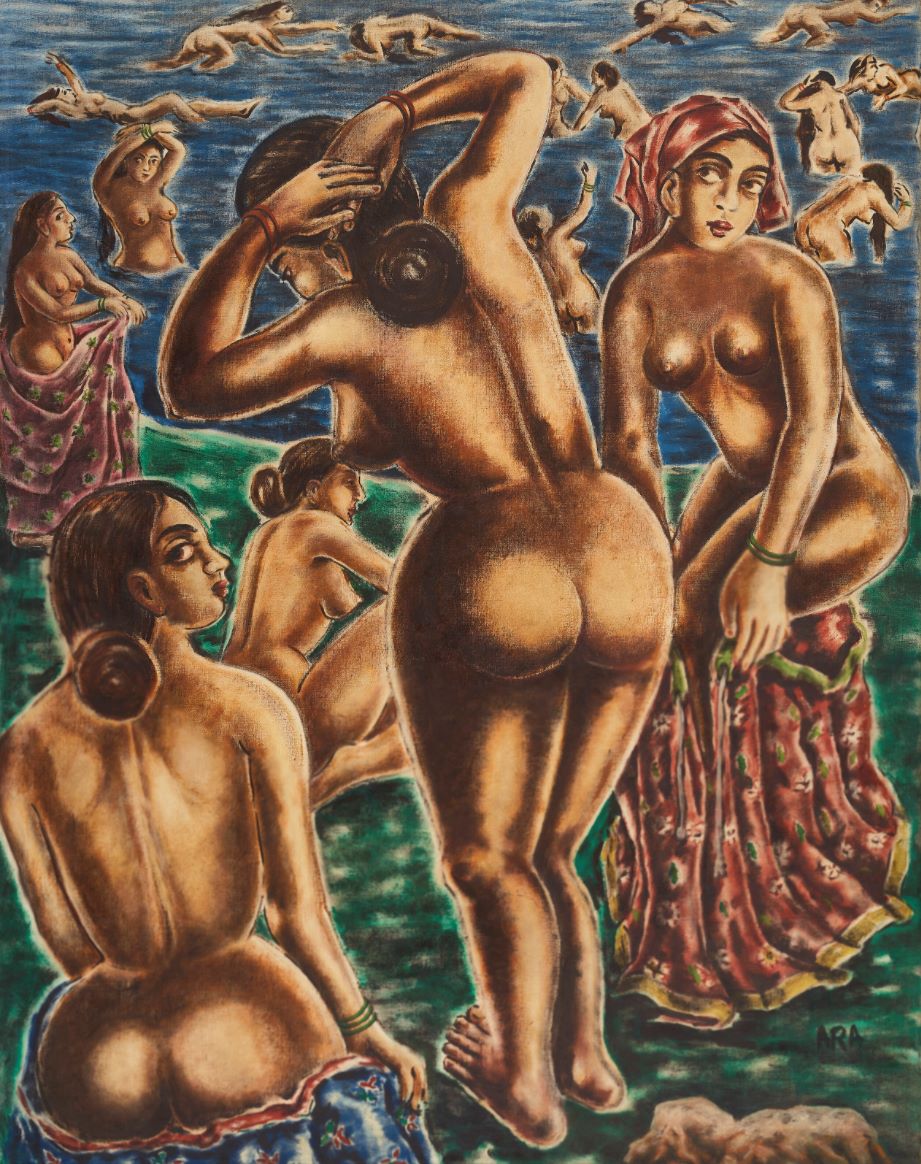

In the year India gained independence, a small group of diverse yet like minded artists came together to form the Progressive Artists’ Group (PAG). Bombay, now Mumbai, has always been a place for new ideas, design, creativity to be accepted, thrive and flourish. Be it the art deco buildings that still stand the test of time or the iconic galleries that have served as starting points for several great artists.
In the 1880s the Bombay Art Society came into being with patronage from British aristocracy as well as Indian royals. Perhaps this is what served as the foundation point for the PAG group, which was formed in 1947 by F.N. Souza, S.H. Raza, M.F. Husain, K.H. Ara, H.A. Gade, and S.K. Bakre. Unimpressed with the quality of art being churned out at that time, these artists championed the philosophy of l‘art pour l’art or art for art’s sake.
Understanding the pulse of the nation at this critical juncture, the Group explored modernism and what it meant to be Indian through a global lens. Debunking old and archaic styles and methods, these artists were in quest of new art for a new India. While the artist collective had a short life, each of them forged their own paths, etching their names in the chronicles of Indian art.
Krishnaji Howlaji Ara or K.H. Ara as he was popularly known came from humble beginnings. Born in 1914 in the small town of Bolarum, Hyderabad, Ara left home to come to Bombay at the tender age of seven. Despite no formal training in fine art, Ara managed to capture the likes of some of the most eminent art critics and collectors of the time such as Rudy von Leyden and Walter Langhammer.
Ara had the brilliant ability to juxtapose Indian subjects drawing influence from ancient Indian art and architecture but adopt modern western styles of painting. Be it his soft, subtle female nudes or his still life, both which he mastered. He drew inspiration from the ordinary and mundane, giving each of his subjects an allure and depth.
A recently auctioned work of Ara by Christies, titled ‘Bathing Gopis’ features a group of women undressing by a river. The setting of the painting seems like Ara’s version of ‘Gopi Vastraharam.’ A lyrical tale of lovable Lord Krishna playing mischief and stealing the clothes of the gopis as they bathed in the Yamuna River. With bright colours and soft, subtle expressions, the painting exudes a sense of fun and frolic yet brings together, age old Indian themes with a fresh and modernist gaze.

Untitled (Bathing Gopis), Krishnaji Howlaji Ara, Christies
Similarly, his still life paintings feature bold colour and impastos, influenced by the work of Langhammer. He experiments with the usual bowls of fruit and vases of flowers, giving them a distinct style and roughness.
Untitled (Woman), Krishnaji Howlaji Ara, Olympia Auctions
In contrast to this though is lot 295 in the upcoming Indian, Islamic, Himalayan and South-East Asian Art and Greek and Roman Antiquities auction on the 4th of June. This atmospheric work is truly unique, bringing together the creative practices and themes he has mastered through the nudes and still life.
Here he explores the female gaze not the female form. He makes one ruminate about what is home and where is home. There is a definite sense of darkness, despair and loneliness in the work. This is a testament to the versatility of Ara’s creative oeuvre. There is a play of light as the artist spotlights the woman, the moon and a simple house amidst the eeriness.
The viewer is left to wonder, is the woman dreaming of a home or has she just lost one?
By Brijeshwari Gohill